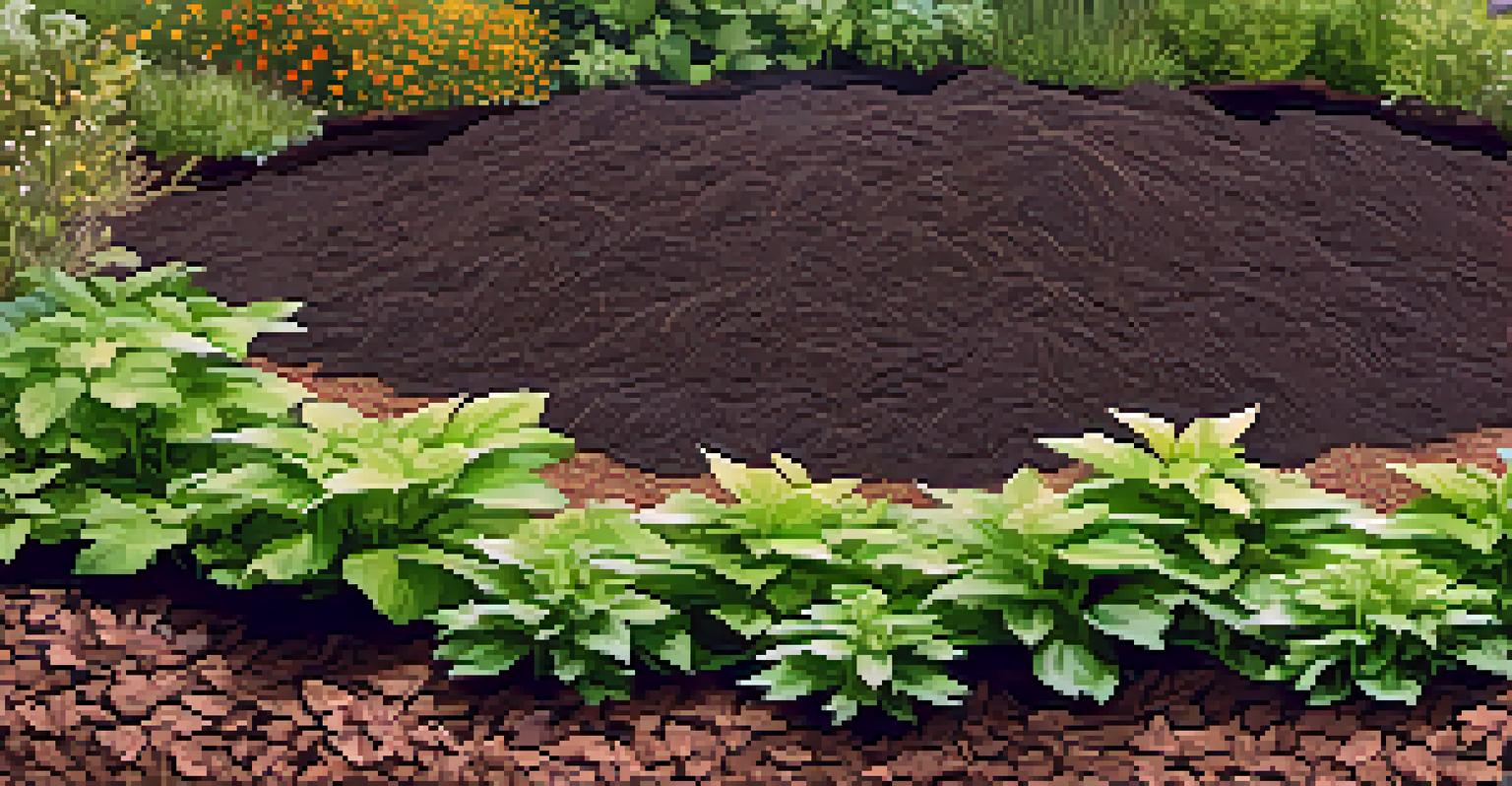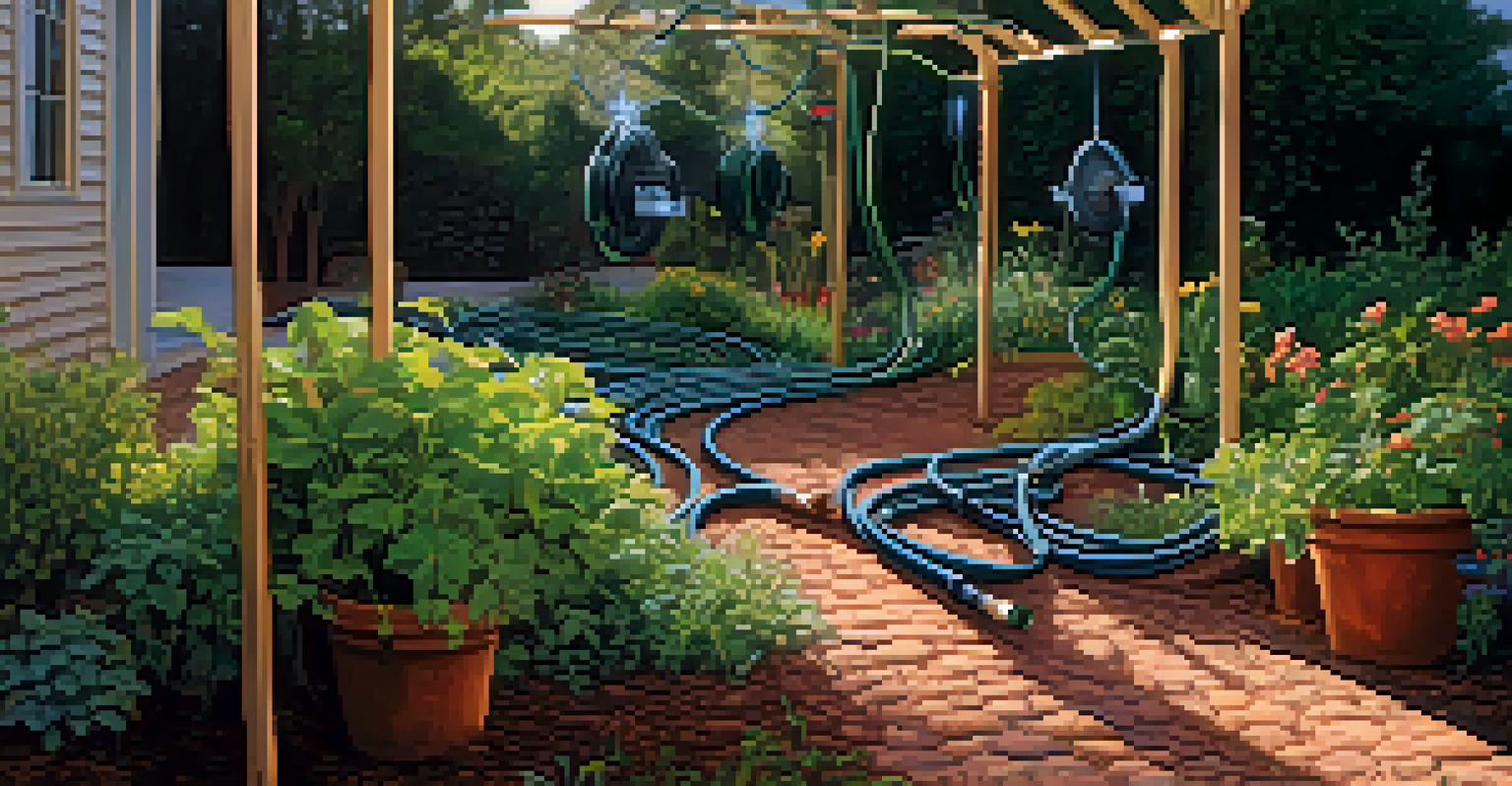Water Conservation: Sustainable Practices in Landscaping

Understanding the Importance of Water Conservation in Landscaping
Water conservation in landscaping is crucial, especially in regions prone to drought. It not only helps preserve our precious water resources but also contributes to a healthier environment. By using sustainable practices, homeowners can create beautiful outdoor spaces while minimizing their water usage.
Water is the driving force of all nature.
Landscaping accounts for a significant portion of residential water use, making it an essential area to focus on. When we adopt water-efficient strategies, we can significantly reduce our water footprint and lower utility bills. This creates a win-win situation for both the environment and our wallets.
Moreover, conserving water in landscaping helps protect local ecosystems. Healthy landscapes can support local wildlife and maintain biodiversity, making our yards not just beautiful but also ecologically beneficial.
Choosing Native Plants for Water-Efficient Landscapes
One of the best ways to conserve water in landscaping is by choosing native plants. These plants are adapted to the local climate and soil conditions, making them naturally resilient and low-maintenance. By using native species, you can create a vibrant garden that requires less water and fewer resources.

For example, in arid regions, plants like lavender, sage, or succulents thrive with minimal irrigation. These plants not only save water but also attract local pollinators, enhancing the ecological value of your garden. Choosing the right plants can transform your landscape into a sustainable oasis.
Water Conservation Benefits Everyone
Implementing water-efficient landscaping practices helps preserve resources, reduces utility bills, and supports local ecosystems.
Additionally, native plants often have deep root systems that help improve soil structure and water retention. This means that once established, they draw moisture from deeper soil layers, further reducing the need for supplemental watering.
Implementing Efficient Irrigation Systems
An efficient irrigation system is key to conserving water in landscaping. Drip irrigation, for instance, delivers water directly to the roots of plants, minimizing evaporation and runoff. This targeted approach not only saves water but also promotes healthier plant growth.
The best time to plant a tree was twenty years ago. The second best time is now.
Timing is also crucial when it comes to watering. Early morning or late evening are the best times to irrigate, as temperatures are cooler, and wind is calmer, reducing water loss. Setting up a timer or using smart irrigation systems can help automate this process, ensuring your plants get the right amount of water without waste.
Moreover, collecting rainwater in barrels for irrigation is a sustainable practice that can significantly reduce reliance on municipal water. It’s a simple yet effective way to make the most of natural resources while nurturing your garden.
Mulching: A Simple Trick for Water Retention
Mulching is one of the simplest yet most effective practices for conserving water in your landscape. By applying a layer of organic material, like wood chips or straw, around your plants, you can reduce evaporation and keep the soil moist for longer. This means less frequent watering and healthier plants.
In addition to moisture retention, mulch also helps suppress weeds that compete with your plants for water and nutrients. By minimizing weed growth, you ensure that your plants thrive without extra stress, leading to a more robust landscape.
Native Plants Enhance Sustainability
Choosing native plants for landscaping promotes resilience, requires less water, and attracts beneficial wildlife.
As a bonus, organic mulch breaks down over time, enriching the soil with nutrients. This not only improves plant health but also contributes to a more sustainable gardening practice, creating a positive cycle of growth and conservation.
Designing a Xeriscape for Maximum Water Efficiency
Xeriscaping is a landscaping approach that focuses on creating beautiful outdoor spaces with minimal irrigation. This method involves designing your garden with drought-resistant plants, strategically placed rocks, and efficient irrigation systems. It’s an attractive and sustainable solution for water conservation.
A well-planned xeriscape can include features like gravel paths or decorative stones that reduce the need for grass, which often requires more water. By incorporating various textures and colors, you can create a visually stunning landscape that stands out while using less water.
Moreover, xeriscaping encourages the use of local materials, which reduces transportation impacts and supports the local economy. It's a holistic approach that combines aesthetics with environmental consciousness.
The Role of Soil Health in Water Conservation
Healthy soil is essential for effective water conservation in landscaping. When soil is rich in organic matter, it can hold more moisture, allowing your plants to thrive with less frequent watering. This means investing in your soil health can lead to significant water savings over time.
Practices such as composting, rotating crops, and minimizing soil disturbance contribute to better soil structure. These techniques enhance the soil's ability to retain moisture and nutrients, creating a thriving environment for your plants. Healthy soil is the foundation of a sustainable landscape.
Community Efforts Boost Conservation
Engaging in local water conservation initiatives fosters collaboration and encourages sustainable practices across neighborhoods.
Additionally, testing your soil can help you understand its composition and nutrient needs. By knowing what your soil requires, you can make informed decisions about amendments and avoid overwatering, further conserving water resources.
Community Involvement in Water Conservation Efforts
Community involvement plays a vital role in promoting water conservation in landscaping. Local gardening clubs, conservation organizations, and workshops can provide valuable resources and education on sustainable practices. By sharing knowledge and experiences, communities can work together toward a common goal.
Participating in community events, such as tree planting days or rain garden installations, fosters a sense of shared responsibility. These activities not only beautify neighborhoods but also contribute to larger environmental efforts. It's a great way to meet like-minded individuals and learn from one another.

Moreover, advocating for local policies that support water conservation can lead to broader changes. Communities can push for incentives for sustainable landscaping practices, ensuring that everyone has the opportunity to contribute to a more sustainable future.